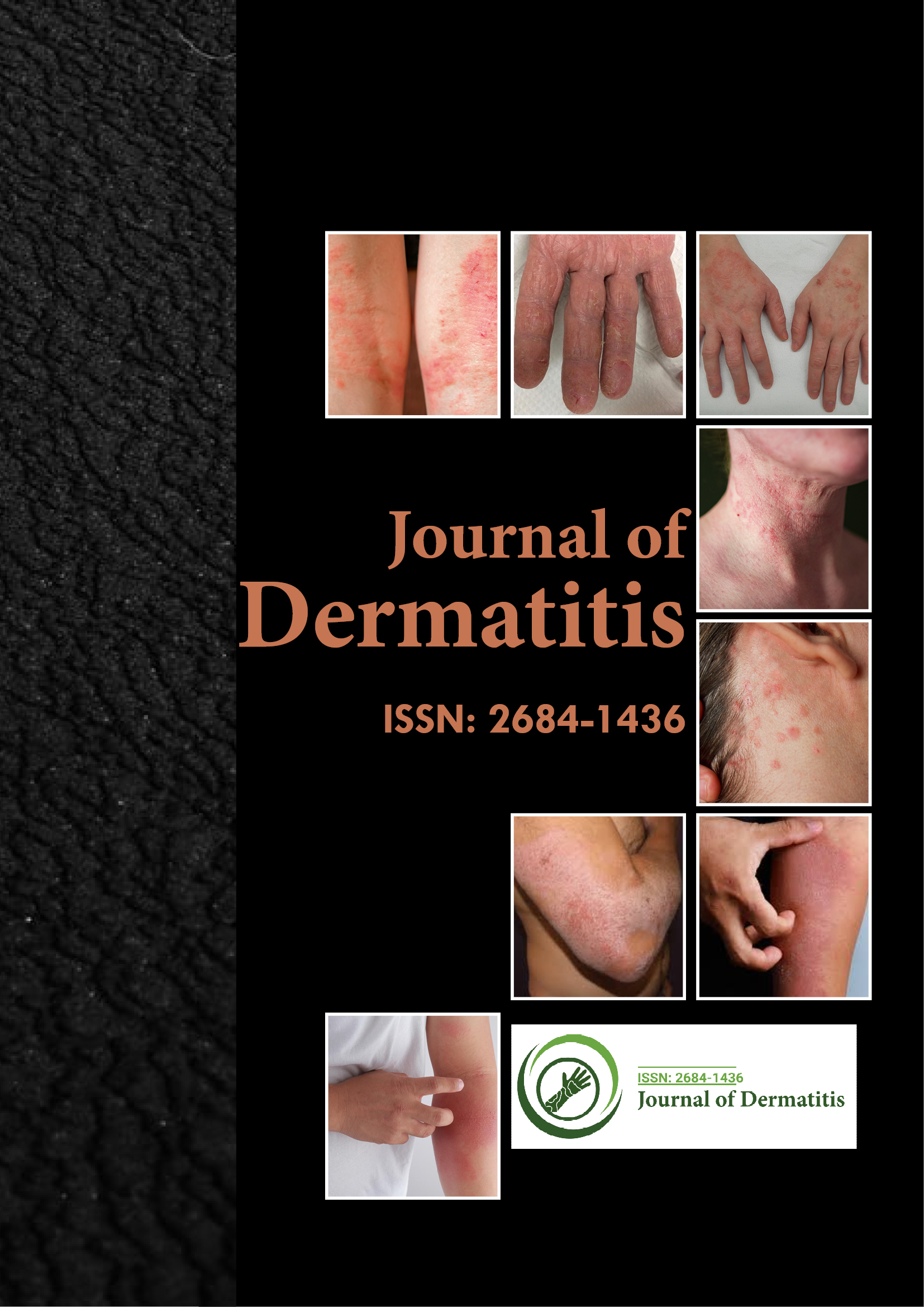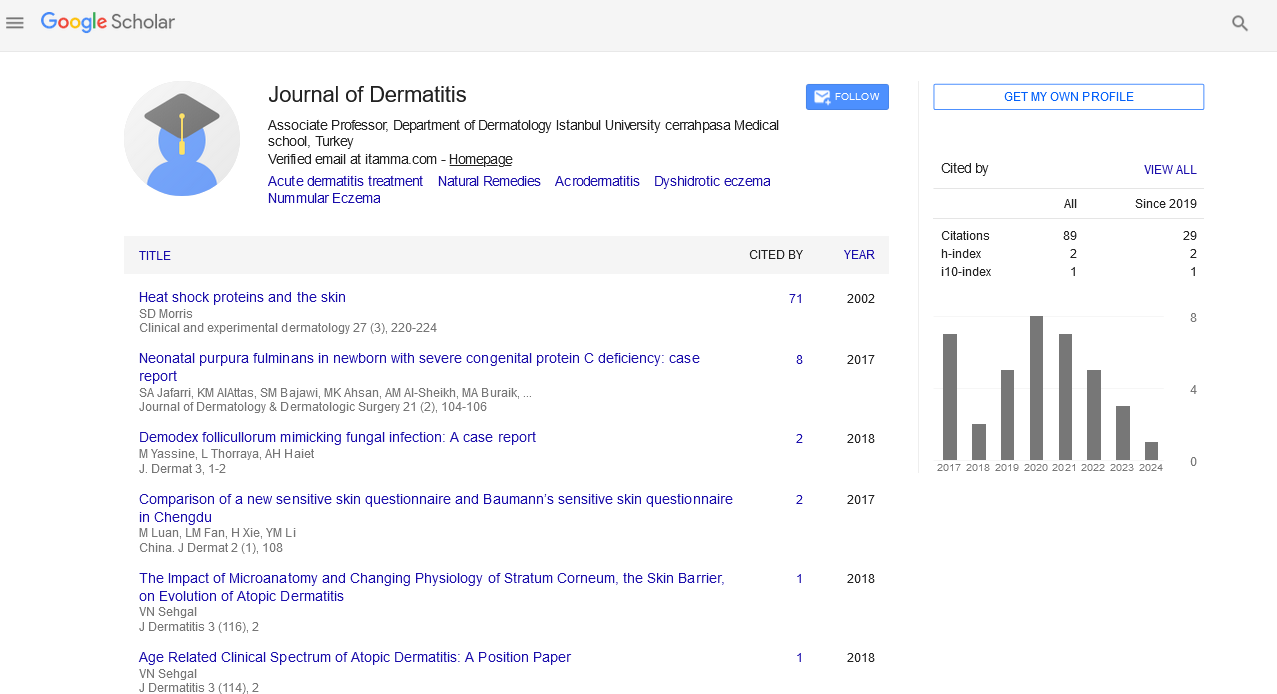Indexed In
- RefSeek
- Hamdard University
- EBSCO A-Z
- Euro Pub
- Google Scholar
Useful Links
Share This Page
Journal Flyer

Open Access Journals
- Agri and Aquaculture
- Biochemistry
- Bioinformatics & Systems Biology
- Business & Management
- Chemistry
- Clinical Sciences
- Engineering
- Food & Nutrition
- General Science
- Genetics & Molecular Biology
- Immunology & Microbiology
- Medical Sciences
- Neuroscience & Psychology
- Nursing & Health Care
- Pharmaceutical Sciences
Editorial - (2021) Volume 6, Issue 5
Editorial Note on Hyperpigmentation
Mark Christoph*Received: 25-Aug-2021 Published: 15-Sep-2021, DOI: 10.35248/2684-1436.21.6.e137
Description
Hyperpigmentation is a condition that is often frequent and harmless condition characterized that the skin becomes darker than the normal skin pigmentation. This darkening or hyperpigmentation is due to the accumulation of melanin excess, forms a layer in the skin. Conditions such as sun injury, irritation, or other skin injuries, including acne vulgaris may lead to the condition of hyperpigmentation. Hyperpigmentation is more frequent in people who are notably excess to sun exposure. Excess melanin accumulation in the skin surface and pores may lead to hyperpigmentation. Hyperpigmentation is also included uncontrolled or abnormal synthesis of melanin. Hyperpigmentation may commonly observe in the face and back of the hands. Melanin is a pigment that consists of melanocytes in the lower layer of the epidermis. Melanin imparts color throughout the body in places including eyes, skin, and hair. As the body ages, the melanocytes are distributed less diffusely and are less regulated in the body. UV-light acts as a precursor for the stimulation of melanocyte development over the skin. Hyperpigmentation typically affects people with dark skin rather than those with lighter skin, since the pigmentation in the dark skin is deeper. The spots are known as age spots and excessive pigmentation, including melasma and post-inflammatory hyperpigmentation, is also the core of skin disorders.
Causes
The growth of melanin causes hyperpigmentation: Causes of Melanin are in various forms like excess exposure to sun, skin age, hormone and inflammation are the main factors of hyperpigmentation.
Excess exposure to the sun: Melanin is one of the natural sunscreens of our skin that protects from harmful UV radiation, but this process is impaired by excessive sunlight including hyperpigmentation.
Hormones: Hyperpigmentation like Chloasma and Melasma are the most common cause of hormonal effects it is more often reported in women when they are exposed to sunlight along with estrogen and progesterone will promote melanin overproduction. Hyperpigmentation is the adverse result of most hormone treatments.
Skin age: Many Melanin cells will reduce with the aging of the skin but the remaining cells grow in size and distribution. One may find out more about the aging of the skin in their skin. The rise in age spots in those over 40, these physiological changes demonstrate.
Inflammation and illness: Hyperpigmentation after inflammatory condition or post-inflammatory condition, results in cuts, burns, acne, and psoriasis. Once the wound is cured, the skin is bruised and discolored. There are some illnesses like autoimmune, gastrointestinal, metabolic, vitamin-connected ailments, are symptomatic through hyperpigmentation. Treatment like chemotherapy, vaccines, anti-malarial and antiseizure medicines are included to reduce Hyperpigmentation.
Prevention
Sun protection is the main step we can take to avoid first and primarily hyperpigmentation, limiting sensitivity of the skin to sunlight helps us to immune hyperpigmentation and try to avoid sunlight as much as possible and wear reflective clothes, like sunscreens, sunglasses and apply sun care gel to the skin daily.
Treatment
Hydroquinone is still considered to be the most effective agent to reduce hyperpigmentation, and however, it should be used only for a short period as it may lead to irritate the skin and potentially induce hyperpigmentation post-inflammatory mainly to the people with dark skin, much as other types of chemical peel and laser therapy.
Citation: Christoph M (2021) Editorial Note on Hyperpigmentation. J Dermatitis. 6:e137
Copyright: © 2021 Christoph M. This is an open-access article distributed under the terms of the Creative Commons Attribution License, which permits unrestricted use, distribution, and reproduction in any medium, provided the original author and source are credited.

